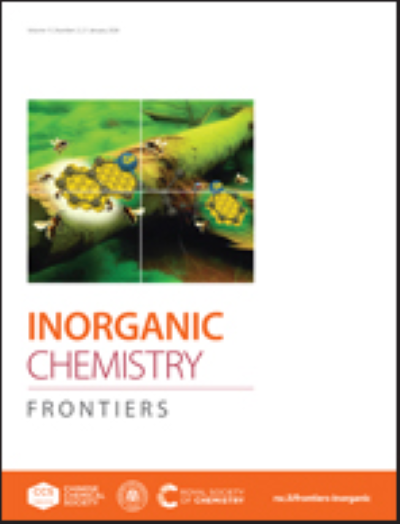金属氢氧化物/钼酸盐非均相界面的工程活性位点重建提高了电化学水氧化过程
IF 6.4
1区 化学
Q1 CHEMISTRY, INORGANIC & NUCLEAR
引用次数: 0
摘要
高效、稳定、经济的水电解催化剂在能源转换和储能系统中具有重要意义。虽然许多单一化合物表现出一定的电催化性能,但其固有的局限性阻碍了最佳性能。本文通过在Fe2(MoO4)3和Ni(OH)2之间构建异质结,合成了一种高活性电极。正如预期的那样,Ni(OH)2/Fe2(MoO4)3@TM异质结催化电极在1.0 M KOH电解质中表现出显著的水氧化活性,表现出265 mV (10 mA cm-2电流输出)的低过电位,同时保持了优异的稳定性。通过电化学测试、dem、TEM、拉曼光谱和DFT计算验证了这种优越的性能。结果表明,构建的异质结电极由于其协同作用,优化了d带中心,调节了*OH和*O在电极界面的吸附能,促进了催化剂的电子转移和表面重构,从而提高了OER活性和稳定性。界面和重构工程产生的协同效应为设计高效、稳定的OER电催化剂提供了新的思路。本文章由计算机程序翻译,如有差异,请以英文原文为准。
Engineering Active Site Reconstruction of Metal Hydroxide/Metal Molybdate Heterogeneous Interface Enhances the Electrochemical Water Oxidation Process
Efficient, stable and economical water electrolysis catalysts are of paramount importance in energy transition and storage systems. Although numerous single compounds exhibit certain electrocatalytic properties, their inherent limitations hinder optimal performance. In this article, a highly active electrode was synthesized by constructing a heterojunction between Fe2(MoO4)3 and Ni(OH)2. As expected, the Ni(OH)2/Fe2(MoO4)3@TM heterojunction catalytic electrode demonstrated remarkable activity for water oxidation in a 1.0 M KOH electrolyte, exhibiting a low overpotential of 265 mV (at 10 mA cm-2 current output) while maintaining excellent stability. This superior performance was validated through electrochemical tests, DEMS, TEM, Raman spectroscopy and DFT calculations. The results indicate that the constructed heterojunction electrode, due to its synergistic effect, optimizes the d-band center, modulates the adsorption energies of *OH and *O at the electrode interface, facilitates electron transfer and surface reconstruction of the catalyst, and thereby enhances OER activity and stability. The synergistic effect caused by interface and reconstruction engineering can provide a new idea for the design of efficient and stable OER electrocatalysts.
求助全文
通过发布文献求助,成功后即可免费获取论文全文。
去求助
来源期刊

Inorganic Chemistry Frontiers
CHEMISTRY, INORGANIC & NUCLEAR-
CiteScore
10.40
自引率
7.10%
发文量
587
审稿时长
1.2 months
期刊介绍:
The international, high quality journal for interdisciplinary research between inorganic chemistry and related subjects
 求助内容:
求助内容: 应助结果提醒方式:
应助结果提醒方式:


